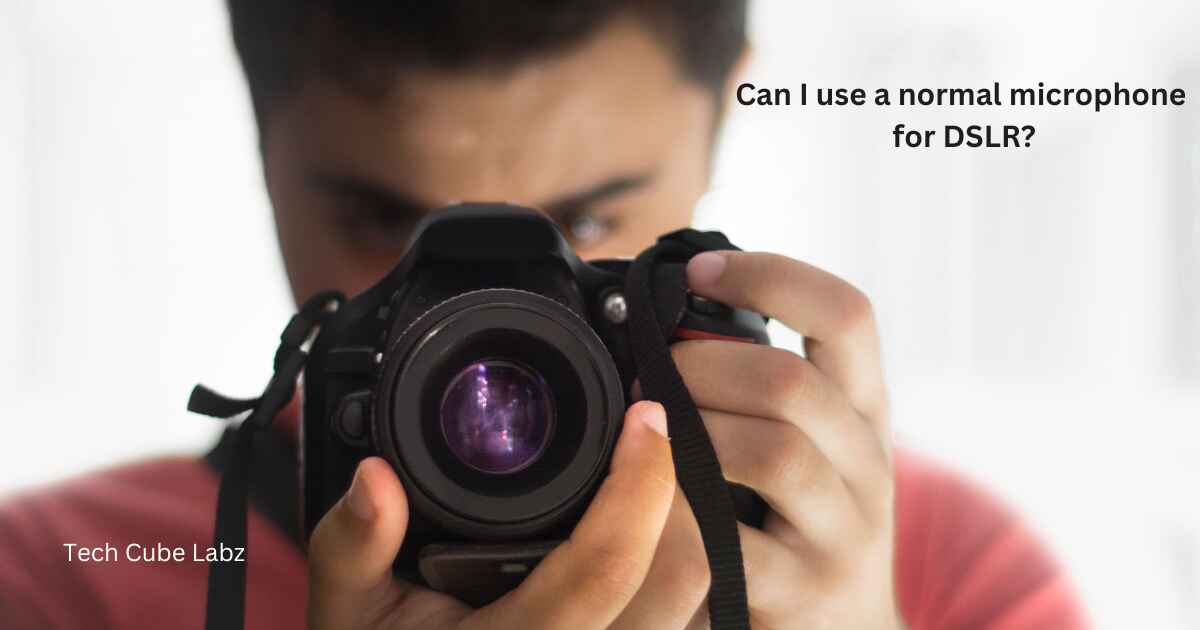
Can I use a normal microphone for DSLR?: It depends on what type of microphone you choose. You can mount a shotgun microphone on the top of a DSLR camera and connect it via the mic input.
The way to connect a handheld or lav mic is slightly different. You can either connect your receiver to your microphone using your DSLR’s audio output or use a separate mixer to connect your mic to your camera.
Lastly, if your DSLR is equipped with an XLR microphone, you can connect it to the camera using an adapter.
It is important to check that the USB microphone has a 3,5mm output and that the camera’s input has a 3,5mm input.
Connect a 3.5mm male-to-male audio cable between your camera’s output and the mic’s headphone input. Then, power your microphone using the USB cable provided.
Connecting an external microphone to your DSLR will allow you to get the best audio quality possible. Unfortunately, there is no easy answer to this. It depends on your model of camera and type of microphone.
It’s easy. DSLR video cameras are a popular choice for producing high-quality videos and live streams. Your camera’s model and manufacturer will determine the specific setup. Some manufacturers have included a USB port on DSLRs to make them webcams.
You can also connect an HDMI cable to a capture device. The capture card converts your 100-hour video to digital streaming.
Are you unsure of what podcast recording microphone to choose for your podcast? Choose the best podcast microphone for you.
7 best normal microphone is used for a DSLR camera
- Rode VideoMic Pro+
- Shure VP83F LensHopper
- Sennheiser MKE 400
- Deity V-Mic D3 Pro
- Rode VideoMicro
- Audio-Technica AT8024
- Azden SMX-30
1. Rode VideoMic Pro+
Since the beginning, one has been the brand of choice for quality microphones. This includes microphones used for field production. There is a growing demand for quality portable sound as more people are upgrading their equipment from cell phones or go-pros. Rode VideoMic Pro+ meets this demand.
The shoe mount is built into the shotgun microphone to allow you to mount it directly on your DSLR or Mirrorless Camera.
The mount has a threaded opening so that you can screw the mount onto a boom or mic arm. The VideoMic includes a detachable micro-USB cord, a 3.5mm TRS connector cable for connecting to the camera and a windsock.
You can charge the battery of the microphone by using the USB cable. However, this is not the only way to power it. The mic can be charged directly through USB, but if there is no place to plug it in, you can use two AA batteries.
The mic’s battery door is built-in, so you won’t lose it when replacing batteries. [Can I use a normal microphone for DSLR?]
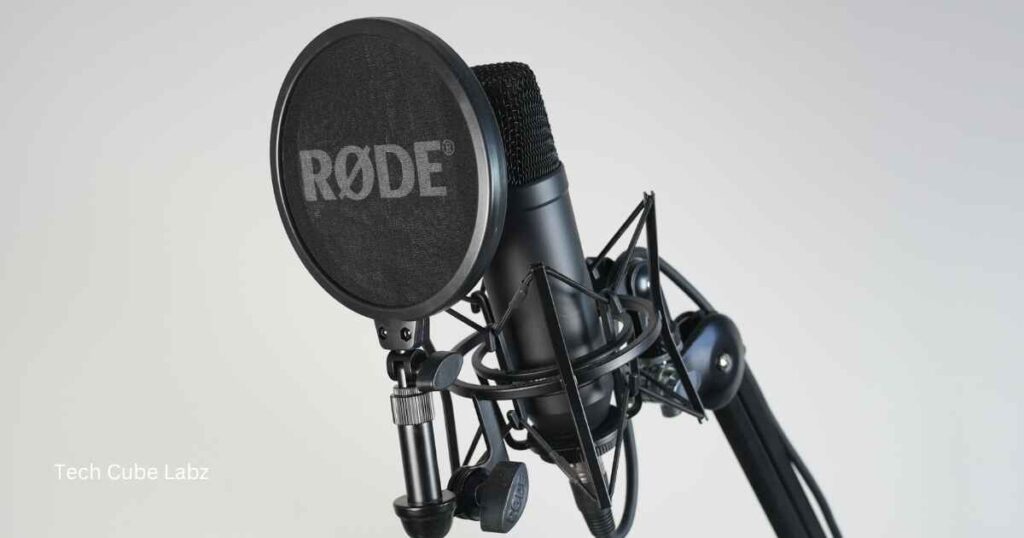
2. Shure VP83F LensHopper
How does it sound to you? It sounds better than what you would expect from something this large. The boom isn’t very big, and it doesn’t have a lot of directional power.
This makes the device portable and lightweight but not too heavy when mounted on the camera. The voice recording is of professional quality, and it was used to good effect in some Foley.
Signal-to-noise works well, but if you’re in a noisy environment, you will definitely hear the background. Reverb was a common feature. Accurate representations of many different voices were also important.
It can be mounted anywhere. It is small and completely self-contained. It’s tiny and totally self-contained. I placed it on a small table, just below the subject and out of view. I put it in all sorts of cool places.
It was like a weird hybrid between a wireless Lavalier and a boom. It’s fun to find the best places to hide it. It’s not surprising that the best results were achieved by placing the transients directly down, just outside the frame.
Slate with a transient that is loud and you will have no problem syncing. [Can I use a normal microphone for DSLR?]
Read Also: Do spy cameras record voices?
3. Sennheiser MKE 400
Sennheiser MKE 400 (2021) is a compact, high-quality shotgun microphone. Its simple controls are effective, and its performance is excellent for the price.
The low-cut filter and super-cardioid pattern of the microphone (together with the windsock) are excellent at reducing noise. If you record carefully, your subject will often be able to cut through even the loudest environments.
This mic is also very small and light, so it won’t slow down your camera. It’s a great choice for travel vloggers who want to travel light but still have all their equipment.
The mic is compatible with any camera, so it can be used with your existing equipment.
These basic controls are not for those who want more control of their recordings. Those with higher budgets may opt for an option that offers better performance. This mic is not suitable for podcasting, unless your intention is to record audio with your smartphone.
The Sennheiser MKE 400-2021 shotgun microphone is a great addition to many people’s toolkits. [Can I use a normal microphone for DSLR?]
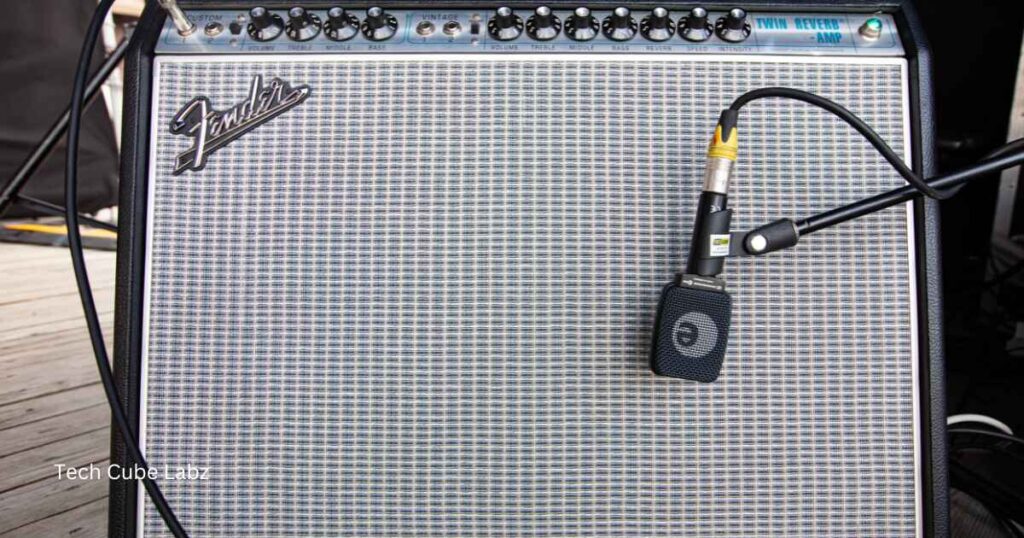
4. Deity V-Mic D3 Pro
The V-Mic D3 Pro has a step-less analog gain dial that allows for a gain adjustment of +20 dB. The V-Mic D3 Pro dial has a bump guard on each side to prevent it from being accidentally turned. You can adjust the gain by adding +20dB on a linear system.
The Deity Microphones D3 Pro offers directional audio recording, adjustable gain, filtering and device compatibility. It is ideal for mobile journalists, YouTubers and run-and-gun videographers.
The V-Mic D3 Pro has a microprocessor built-in that configures the TRRS connector,. Hence, it works with most 3.5mm microphone input jacks.
It is compatible with DSLRs, Camcorders, Mobile Devices and Portable Audio Recorders. The Rycote adjustable shock mount, 3.5mm TRRS cable, and supplied coiled cable make it easy to attach the V-Mic D3 Pro to your camera, tripod, or boom pole.
The V-Mic D3 Pro is powered by a 320mAh lithium-ion battery that can last up to 51 hours. The plug-in power only wakes the mic out of its standby mode. The internal battery can be recharged via USB in about two hours.
When your camera or device is switched off, automatic power-saving enters standby mode to conserve battery life. Power management is made easier with the power switch and LED indicator. The LED will turn red when there is a low power level. [Can I use a normal microphone for DSLR?]
Read Also: What type of camera is used to film movies?
5. Rode VideoMicro
The Video Mic from Rode offers a unique solution to intermediate and advanced photographers who want to enhance their existing on-camera mic with greater audio control. Amazingly, this mic is the only one of its kind, with a shock mount and microphone design.
Video Mic comes with a unique shock mount that is unlike any other shoe accessory. The shock mount’s construction is small and compact, allowing the Video Mic to be as compact as possible. If you have the camera controls on your camera next to the accessory slot, it could block them.
We will begin with the basics for this microphone review. Except for a small metal piece that reinforces the bottom of the shock mount and two screws, the mount and most of the microphone are made of plastic.
It is sturdy enough for video production but lightweight enough not to overwhelm smaller handheld camcorders. The size may cause some issues with controls, but its light weight makes it possible to use almost any camcorder. The mic is equipped with a windscreen on the front.
On the rear of the microphone, you can easily access the on/off switch as well as the battery housing. The switch is three-positioned — on, off and high-pass.
The off-and-on positions are obvious. High-pass filters help to enhance voices by cutting out low frequencies.
The LED beside the switch will light up when you turn on the microphone and blink when the battery is low. The battery housing contains a single 9V lithium-ion battery. [Can I use a normal microphone for DSLR?]
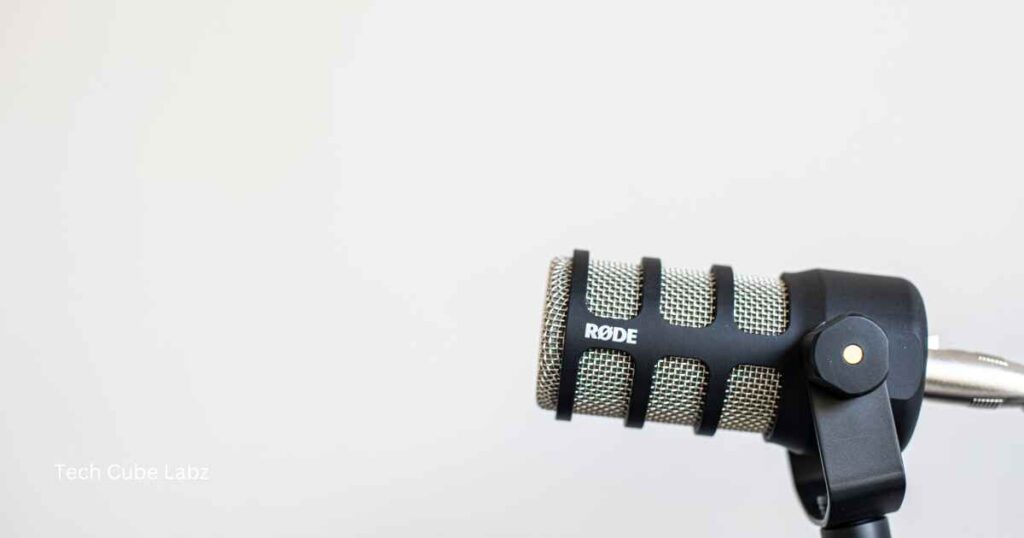
6. Audio-Technica AT8024
The AT8024 features both a line-cardioid and a mid-side matrixed stereo mode. It allows you to record a sound source or expand the field to achieve a more realistic recording. The AT8024 delivers much better audio than the camera’s built-in microphone.
The AT8024 has a three-position adjustable pad for input (-20 dB, -10dB, 0dB ) that allows it to record soft or very loud passages of sound without distortion.
Switchable low-frequency rolling-off reduces unwanted ambient noise, room resonance, and mechanically-coupled vibrations. The microphone uses a single AA battery for optimal performance and high SPL.
It also has an integrated camera shoe mount, which attaches to DSLRs or shoe-equipped cameras. Included are a 39″ coiled cord with a mini-jack 1/8″ AA battery and a frosted windscreen. [Can I use a normal microphone for DSLR?]
7. Azden SMX-30
SMX-30 DSLR microphone is a good hybrid between a shotgun mic and an X/Y stereo. Azden is a relatively young manufacturer, but it’s amazing to see their innovative approach.
They’ve created a high-quality, new piece of equipment that’s highly sought after. SMX-30 is also a reasonably priced product.
It costs about the same price as Rode VideoMic ProR and comes with an extra stereo mode. This announcement was met with skepticism because, as they said, there’s no such thing as a free lunch. The stereo mode was not inferior to standalone gadgets and even better than them!
Azden SMX-30 is a product we must make very clear. This is not a mid/side stereo shotgun. MS shotguns are only available in the professional world, and they are usually six-hexafluple times more expensive.
SMX-30, on the other hand, combines two devices – a traditional shotgun with an X/Y Stereo mic resting on top. It is technically impossible to use both simultaneously. You can only switch between them.
The shotgun uses the same capsules as the SMX-15 and has a decent performance. The two models were released in 2016, and they have improved on their predecessors.
Azden’s design is a lot like Rode VideoMic Pro R, but it has a few advantages. VideoMic Series has always had a good performance but was prone to flimsiness.
They also felt wobbly when placed on top of cameras. SMX-30 is more substantial. The suspension is more durable and stiffer while still offering good isolation.
It is also slightly more directional despite its shorter dimensions. [Can I use a normal microphone for DSLR?]
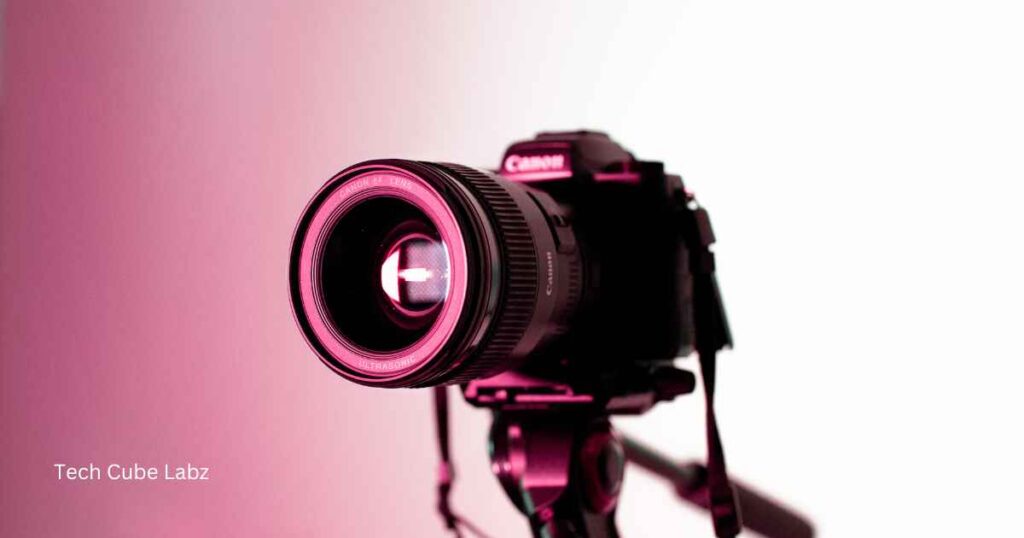
Conclusion:
Your specific recording requirements will determine the best microphone to use with your DSLR camera. Rode Video Mic Pro+, Shure VP83F Lens Hopper and Rode Video Mic Pro+ offer high-quality audio with a variety of features.
If you’re looking for an affordable option, both the Rode Video Mic as well as MovoVXR10 offer good performance.
The Audio-Technica at8024 and Azden SMX-30 are excellent options if you need to switch between mono and stereo recordings. Select the best microphone for your budget and requirements. [Can I use a normal microphone for DSLR?]
Can I use a normal microphone for DSLR?: FAQ
1. Can you connect a microphone to a DSLR camera?
Ans: You can set up an external microphone on a DSLR camera that has the same connector as your camera by following these steps: Connect a separate cable to the microphone. A click will indicate that it is working. Connect one end of the cable to the camera jack.
2. Can you use any mic stand for any mic?
Ans: Most microphone stands in the US have a male 5/8″ threaded end. This should fit in any standard microphone mount.
3. Should I get a standing mic?
Ans: You do. A Microphone Stand or Mic Stand will ensure that your audio recordings are consistent and of high quality. This allows you to place your microphone accurately and maintain it steady, reducing unwanted vibrations and handling noise.
